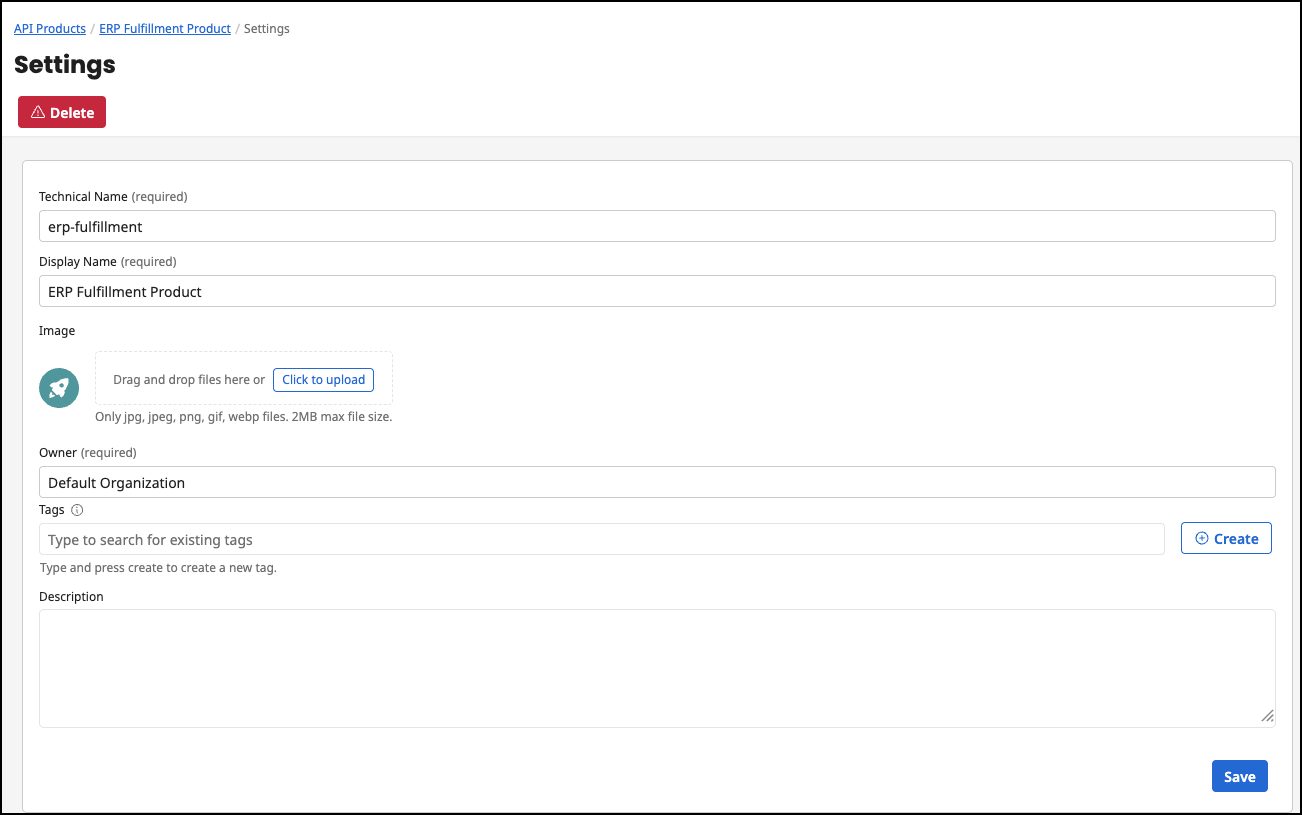API Product Settings
Overview
In the API product settings you can make basic configurations, such as change the name or the image of the API product. In the settings, you can make the advanced configurations Tags. At the top left you can delete the entire API product using the corresponding button.

Settings of the API
All relevant setting options are listed and described in the table below.
| Settings | Description |
|---|---|
| Technical Name | The technical name of an API must be unique. |
| Display Name | The display name can differ from the technical name and does not have to be unique. |
| Description | The description of the API is displayed in the Developer Portal. |
| Image | The image of the API. It is also displayed in the Developer Portal. |
| Owner | The organization of the API. Who is allowed to see it also depends on this. |
| Tags | With the tags you can categorize APIs. e.g. you can search for the tags in the API overview. |
| Platform | The platform of the API Product is determined by the first API that is added API products can only contain APIs of one platform. With the exception of Open Proxy Specification APIs, these can always be added. E.G.: AWS Default: Unknown. |
API Product Subscription Behavior in Hierarchical Organizations
When API products are shared across organizational hierarchies, there are specific rules governing application visibility and subscription capabilities that ensure proper access control.
-
API Product Visibility: When an API product is made visible to a parent organization, all child organizations in that hierarchy automatically gain visibility to the API product.
-
Application Access: Applications remain restricted to their owning organization. Child organizations cannot access applications belonging to parent organizations.
-
Subscription Process: Users from child organizations must create new applications within their own organization to subscribe to API products visible from parent levels.
Example Scenario
Organization Hierarchy:
├── Grandparent Organization
├── Parent Organization
└── Child Organization
Configuration in this example:
-
API Product Owner: Parent Organization
-
API Product Visibility: Set to Grandparent Organization
-
Application Owner: Parent Organization
Results:
-
Child Organization users can:
-
View the API product in Developer Portal
-
Create new applications within Child Organization
-
Subscribe to the API product using their newly created applications
-
-
Child Organization users cannot:
-
View or access applications owned by Parent Organization
-
Subscribe using Parent Organization's existing applications
-
